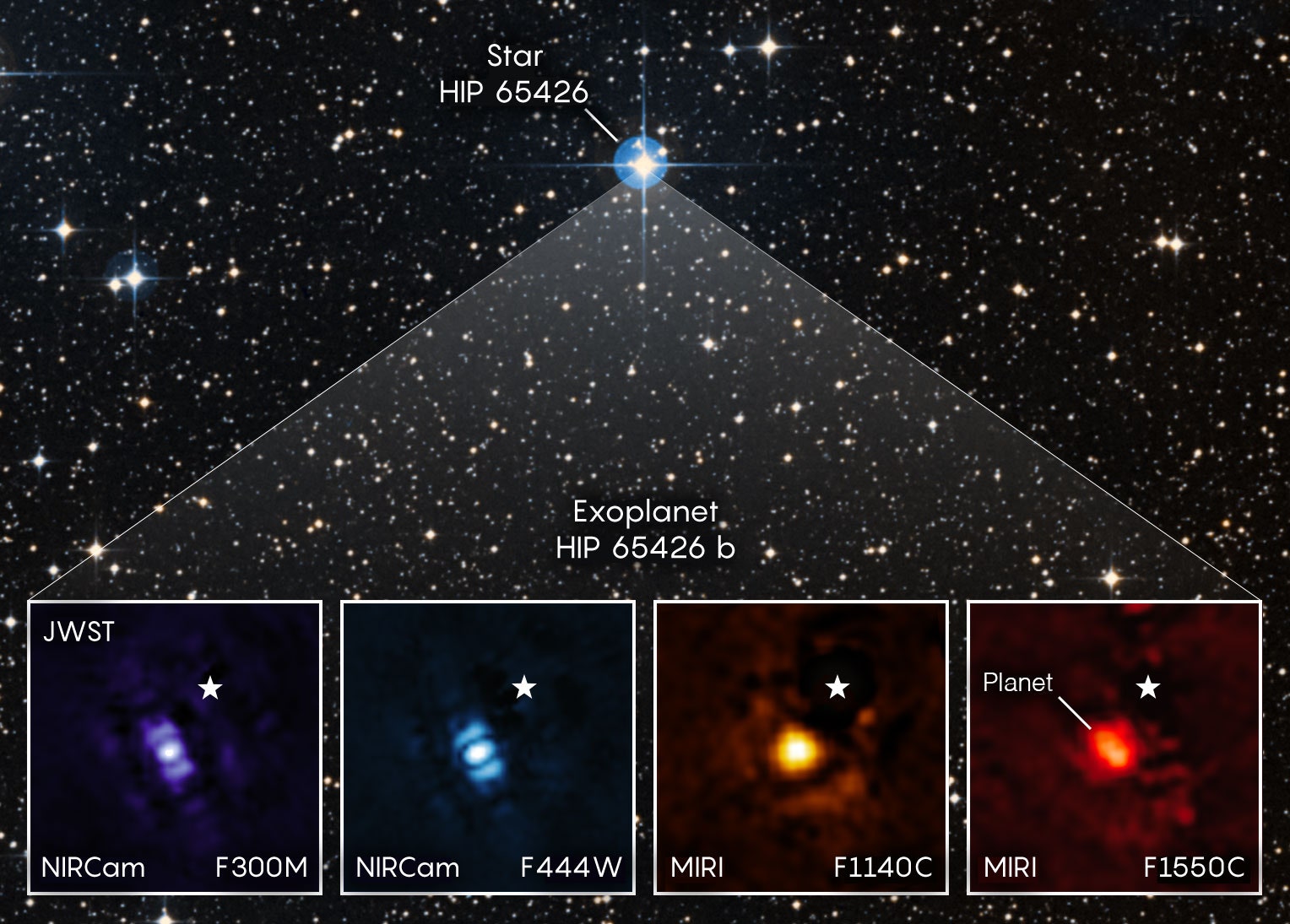The JWST’s size and sensitivity enabled it to collect more light from this planet than any previous observatory has obtained. (Its photo looks grainier than SPHERE’s only because the JWST observes longer, infrared wavelengths.) This allowed Hinkley, Biller and their team to refine the estimate of the planet’s mass, which they peg at about seven Jupiter masses, less than SPHERE’s estimate of about 10. Their results also help nail down the planet’s radius, which is 1.4 times that of Jupiter. Simple models of planetary evolution can’t easily explain this world’s combination of properties; Carter noted that the precise new data will allow scientists to test models against each other and “tighten our understanding.”
HIP 65426 b’s surface features aren’t visible in the image, but Biller said it would “probably look banded” like Jupiter, with belts caused by variations in temperature and composition, and might have spots in its atmosphere caused by storms or vortices.
The giant planet is inhospitable to life as we know it, but it represents a class of large planets that scientists are eager to learn more about. Jupiter probably played a key role in sculpting our solar system, perhaps enabling life on Earth to take hold. “It’d be nice to know if that works in other solar systems,” said Macintosh.
The Webb telescope’s Near Infrared Camera (NIRCam) and Mid-Infrared Instrument (MIRI) each captured views of the planet HIP 65426 b at multiple infrared wavelengths, providing details that astronomers could use to infer the planet’s properties. The white stars mark the location of the host star HIP 65426, which has been subtracted using coronagraphs and image processing, while the bar shapes in the two NIRCam images are artifacts of the optics, not objects in the scene.Illlustration: NASA/ESA/CSA, A Carter (UCSC), the ERS 1386 team, and A. Pagan (STScI)
Because the JWST is so much more stable than expected, scientists say it should be able to photograph smaller exoplanets than anticipated—perhaps as small as a third of Jupiter’s mass. “We could image things like Neptune and Uranus that we’ve never directly imaged before,” said Emily Rickman, an astronomer at the Space Telescope Science Institute in Maryland, which operates the JWST.
Now that the JWST’s coronagraph has passed its road test, Hinkley thinks astronomers will be lining up to use it to take otherworldly photos. He expects to see “definitely dozens” by the end of the telescope’s lifetime. “I hope it’s more like hundreds.”
Peeking in Distant Skies
In addition to the exoplanet photo, Hinkley’s team will announce in the coming days that they have discovered an array of molecules in the atmosphere of a suspected brown dwarf—sometimes known as a “failed star”—orbiting a companion star. Almost 20 times heavier than Jupiter, the object has a mass just below the threshold where fusion could begin in its core.
Using an instrument on the JWST that picks apart the light’s frequencies, a process called spectroscopy, the scientists found water, methane, carbon dioxide and sodium, all revealed at an unprecedented level of detail. They also detected smokelike clouds of silica in the candidate brown dwarf’s atmosphere, something hinted at before in such objects but never established. “In my mind this is the greatest spectrum ever obtained of a substellar companion,” said Hinkley. “We’ve never seen anything like it.”



